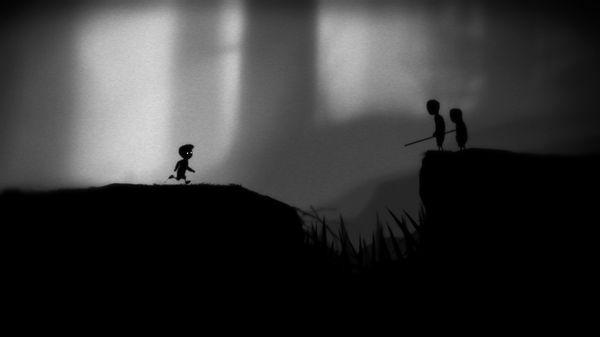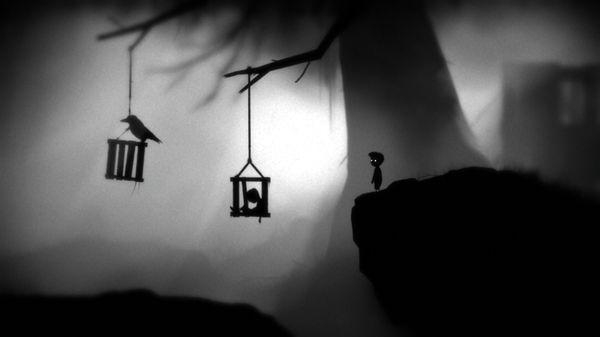- Wondering how to get Monopoly GO! free rolls? Well, you’ve come to the right place. In this guide, we provide you with a bunch of tips and tricks to get some free rolls for the hit new mobile game. We’ll …
Best Roblox Horror Games to Play Right Now – Updated Weekly
By Adele Wilson
Our Best Roblox Horror Games guide features the scariest and most creative experiences to play right now on the platform!The BEST Roblox Games of The Week – Games You Need To Play!
By Sho Roberts
Our feature shares our pick for the Best Roblox Games of the week! With our feature, we guarantee you'll find something new to play!Type Soul Clan Rarity Guide – All Legendary And Common Clans Listed!
By Nathan Ball
Wondering what your odds of rolling a particular Clan are? Wonder no more, with my handy Type Soul Clan Rarity guide.
Limbo Review
Limbo is a 2D side-scrolling puzzle game where you’ll move left and right, jump and climb, avoid dangers and solve puzzles using levers and pushing crates around. There’s no score, unlimited lives, no health, no continues and only takes about 3 hours to complete. While these are the facts, they still don’t get to the heart of what it “feels” like to play it – and that’s what makes the game so unique.

Limbo
Limbo is a 2D side-scrolling puzzle game where you’ll move left and right, jump and climb, avoid dangers and solve puzzles using levers and pushing crates around. There’s no score, unlimited lives, no health, no continues and only takes about 3 hours to complete. While these are the facts, they still don’t get to the heart of what it “feels” like to play it – and that’s what makes the game so unique.
It’s the feeling you get when you finally see another human figure in this strange nightmare shadow world, and all he does is run away and try to kill you. It’s the heart stopping moment arachnid legs appear from the shadows, moving around and tracking you… waiting for the moment to strike. It’s the fear that sets in when you pull a lever and hear a buzzsaw start up somewhere close (too close for comfort) and you just know that it’s going to take a good swipe at you sometime soon. It’s that emotional roller coaster that provides Limbo with its impact on the player.

The fact that Limbo is able to draw any emotion out of the player at all is a testament to how well it uses the few elements at its disposal. It’s really a matter of what isn’t there that leads us to fill in the gaps in the storyline, which can result in an intensely personal experience and take on the events that unfold over its admittedly short game time of 2 to 3 hours.
I chalk this up to the same concept of the Uncanny Valley, which basically says that our minds fill in the blanks when looking at objects and what we fill in always looks perfect to us. It’s what makes a stick figure look human (we fill in a ton of information in our brains) and some super high-res CGI modeled faces look “off” to us (cause we’re barely asked to fill in any info at all). So it goes with the story in Limbo. We get next to nothing in terms of narrative, just the feeling that it does mean something. So we fill it in ourselves, out of our own emotions.
This isn’t laziness on the part of the developer, these are deliberate choices. Outside of the title we’re given nothing of a narrative. There’s no color palate at all outside of shadows and muted whites. There’s no music, only the sound of wind blowing, of water lapping at the side of a boat, of the dirt under the boy’s feet as he runs. No talking, quests, item management or weapons. Nothing like that. These elements come together (or are missing) to create a wonderful feeling of desolation, that’s supposed to be unsettling and succeeds as such.
It fits with the gameplay really, cause you’re going to die in Limbo… a lot. The puzzles are deadly, and there are traps everywhere. You’ve got unlimited lives but one good hit (or fall) will kill you. Most of the puzzles are trial and error in that respect, so word to the wise don’t get frustrated if you never saw some deadly trap coming since you often times won’t know something’s there until it kills you. The point is to learn it for the next time you try it.

The game was released last year on Xbox Live and has now been ported over to the PC, mostly perfectly. The controls are mapped to the arrow keys, with up being the jump command and control handling the “grabbing” of items in the world. It works well enough but it would be nice if you could remap them but alas, no dice. I know this was intention since Limbo tries really hard to not drop you into any menus but it’s a functional thing that should’ve been included.
Much of this review probably makes Limbo sound horribly pretentious, and I suppose you could take that stance. But you’d really be selling the game short and losing out on a wonderful experience. True, it’s short. But what’s there is so effective that the game’s length plays to it’s strong suit. It gets in, makes a huge impact, and gets out.

The good

The bad
More articles...
Monopoly GO! Free Rolls – Links For Free Dice
By Glen Fox
Wondering how to get Monopoly GO! free rolls? Well, you’ve come to the right place. In this guide, we provide you with a bunch of tips and tricks to get some free rolls for the hit new mobile game. We’ll …Best Roblox Horror Games to Play Right Now – Updated Weekly
By Adele Wilson
Our Best Roblox Horror Games guide features the scariest and most creative experiences to play right now on the platform!The BEST Roblox Games of The Week – Games You Need To Play!
By Sho Roberts
Our feature shares our pick for the Best Roblox Games of the week! With our feature, we guarantee you'll find something new to play!Type Soul Clan Rarity Guide – All Legendary And Common Clans Listed!
By Nathan Ball
Wondering what your odds of rolling a particular Clan are? Wonder no more, with my handy Type Soul Clan Rarity guide.







